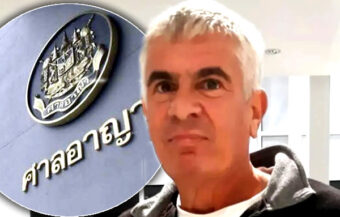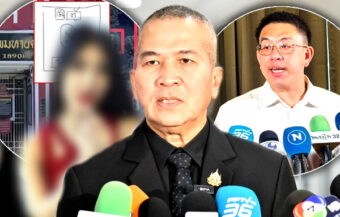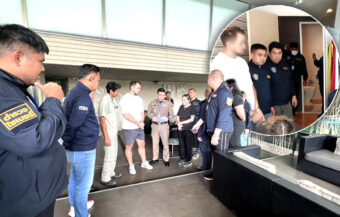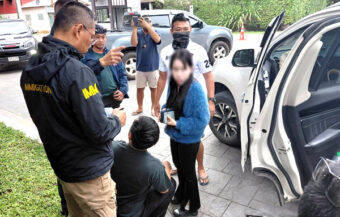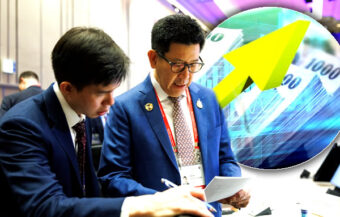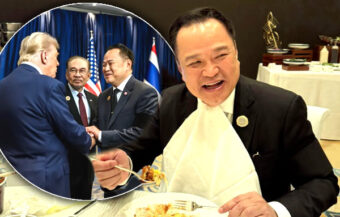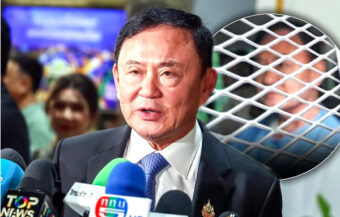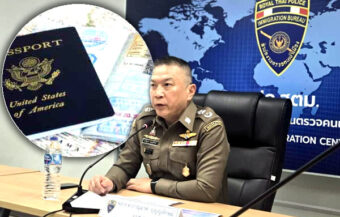Drunk Cambodian soldier disrupts ASEAN border inspection, harasses Thai troops as shelling, landmine and civilian damage are exposed, forcing military apology while Thailand highlights ongoing aggression and humanitarian crisis along the frontier.
Cambodia was forced to apologise on Wednesday after one of its soldiers harassed Thai translators escorting ASEAN military attachés near the Chong An Ma checkpoint. The outburst, seen as a diplomatic embarrassment, came as Thailand continues to take control of the narrative over the deadly border clashes from July 24 to 28 — when Cambodian forces allegedly fired indiscriminately on Thai civilians.
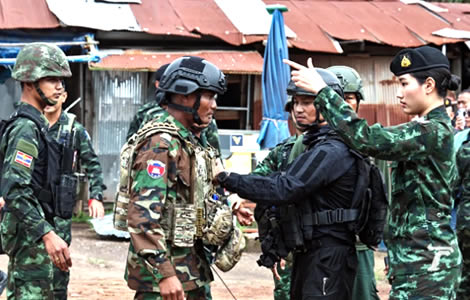
The Cambodian military has apologised after one of its soldiers disrupted a high-profile inspection by ASEAN military attachés at the Thai-Cambodian border. The incident came just hours after video footage emerged showing Cambodian forces planting PMN-2 anti-personnel mines near the Chong An Ma checkpoint.
According to senior Thai military officials, the soldier was intoxicated and acted alone. Yet the damage—both physical and diplomatic—was already done.
Major General Kran Boonchai, Thailand’s deputy director of military intelligence, announced the apology during a Wednesday briefing in Surin Province. He addressed the visiting military attachés from eight ASEAN nations: Brunei, Malaysia, Laos, Indonesia, Myanmar, the Philippines, Singapore and Vietnam.
Drunk Cambodian soldier disrupts inspection and hurls abuse at Thai troops and ASEAN observers nearby
Importantly, the apology followed a heated verbal altercation on Tuesday. A drunk Cambodian soldier reportedly shouted at Thai troops and the visiting delegation near the conflict zone. Thai personnel remained calm, but the moment was tense.
During the disruption, two Royal Thai Army officers were serving as interpreters. One was Captain Atom, a female officer now hailed across Thailand for her calm and professional conduct.
Meanwhile, the ASEAN observers were on the final day of a three-day mission. Their task was to inspect damage caused by Cambodian artillery strikes since July 24 and assess the situation on the ground.
The delegation’s first stop was Phanom Dong Rak Hospital. It had been heavily damaged during Cambodian shelling. One BM-21 rocket landed directly on hospital grounds, gouging a crater into the lawn in front of the flagpole. A nearby bunker—originally built in 2011—housed 139 patients and staff for over five hours during the bombardment.
Hospital shelled by BM-21 rocket while 139 patients hid in bunker as ASEAN team began inspection tour
Dr. Worawan Koprakitngam, the hospital director, greeted the delegation. She detailed the attack’s impact on health services. The worst-hit structure was the Bhumipat Building, a rehabilitation centre for psychiatric and drug-addicted patients. A rocket tore through the second-floor roof, shattering glass and exposing vulnerable patients to flying shrapnel. Adjacent buildings were also scarred.
As a result, eleven hospital staff members are now being treated for severe trauma. Many show symptoms of post-traumatic stress disorder. Repairs are pending, while fear remains.
Damage wasn’t limited to the hospital. According to Thai officials, fighting along a 125-kilometre stretch of the border has affected five districts and nearly 300 villages. Kab Choeng, Phanom Dong Rak, Buachet, Sangkha and Prasat districts have all been hit hard.
Over 100 homes, three temples and vast areas of farmland have been destroyed. More than 200,000 people are affected. Ten civilians, including an 8-year-old child, have died. At least seven others have been seriously injured.
Five Thai districts bombarded, over 200,000 people affected. Hospitals, homes and temples left in ruins
Maj. Gen. Kran warned the observers: “Cambodia’s aggression is not accidental. This is a pattern.” He urged the delegation to collect and use all the evidence observed during the mission.
He emphasised three major violations. First, Cambodia continued using landmines after the ceasefire. Thai troops were reportedly injured by PMN-2 devices even after the agreement took effect.
Second, drones have been spotted flying across the border. Cambodian surveillance activities suggest military reinforcements or future strikes are being prepared.
Third, he condemned the use of disinformation. Cambodia, he said, has been flooding social media with false claims. These narratives downplay the violence and shift blame. “Words can be weapons too,” he warned.
Landmines after ceasefire, drone surveillance and fake news named as three violations by Cambodia
Army spokesman Major General Winthai Suvari reinforced those concerns. “Provocations, fake news and staged media operations are fueling the conflict,” he said. “The fighting might pause. But the misinformation keeps the war alive.”
At this point, Brigadier General Samsul Rizal bin Musa, Malaysia’s Assistant Defence Attaché to Thailand, addressed reporters. He had witnessed the disruptive incident firsthand.
“I don’t want to be sweet-talking,” he said firmly. “But the soldiers on that side are not professional. The Thai soldiers are gentlemen. They are composed and professional.”
He stressed that his delegation was not there to assign blame. Rather, the mission’s role was to observe and gather facts on ceasefire compliance.
Still, he acknowledged that the Cambodian soldier’s actions at Chong An Ma clearly showed “a lack of professionalism.”
As the delegation continued its inspection, they were shown a short documentary titled Crying from the Border. It featured raw footage of damaged homes, shattered schools and displaced families. The film gave voice to civilians now living in fear, many of whom have lost everything.
Lt. Gen. Anuparp Sirimonthon, deputy army chief of staff, led Thailand’s official delegation. He underscored that Cambodian forces have broken the ceasefire repeatedly. His message was blunt: “This is not an isolated flare-up. This is sustained, coordinated aggression.”
Thailand has responded with humanitarian efforts and defensive measures. Currently, 918 bomb shelters serve the affected region, though they can only house 15,000 people. To fill the gap, 154 temporary shelters have been established.
At the same time, border troops were instructed to remain unarmed during the ASEAN visit. According to Maj. Gen. Winthai, the Thai side respected protocol, even when Cambodia hosted a similar delegation earlier this year.
ASEAN shown civilian suffering as film reveals destruction while Thailand builds shelters and holds fire
However, during Tuesday’s tour, Cambodian soldiers disrupted the process. Thai officials had to escort the drunken soldier away to avoid escalation.
“Respect must go both ways,” Winthai said. “When our soldiers hosted visitors, we did not shout. We did not threaten.”
The Malaysian attaché later stated he would present his final report in detail. It will include findings on landmine use, drone activity and false media claims. He said it was vital to expose these tactics to help prevent further conflict.
“Let’s not allow propaganda to obscure the truth,” he said.
Cambodia caught red-handed telling lies about PMN-2 mines. Soldiers on video clips planting bomb traps
As the mission wrapped up, Thai officials hoped the delegation had seen enough to understand the seriousness of the situation.
“This is not a border disagreement,” Maj. Gen. Kran said. “This is about lives, safety and truth. The facts are here. The evidence is here.”
He urged the observer team to share their findings with clarity and urgency.
“This is not politics,” he added. “This is humanity.”
Join the Thai News forum, follow Thai Examiner on Facebook here
Receive all our stories as they come out on Telegram here
Follow Thai Examiner here
Further reading:
Charged situation – Defence chiefs from Thailand and Cambodia meet in Kuala Lumpur. ASEAN damaged
Fear on Eastern border under Martial law. Cambodian Bond nabbed on ฿162 a day from Phnom Penh regime
Cabinet meets after Cambodian ceasefire. Acting PM Phumtham spoke later with Trump for 30 minutes


